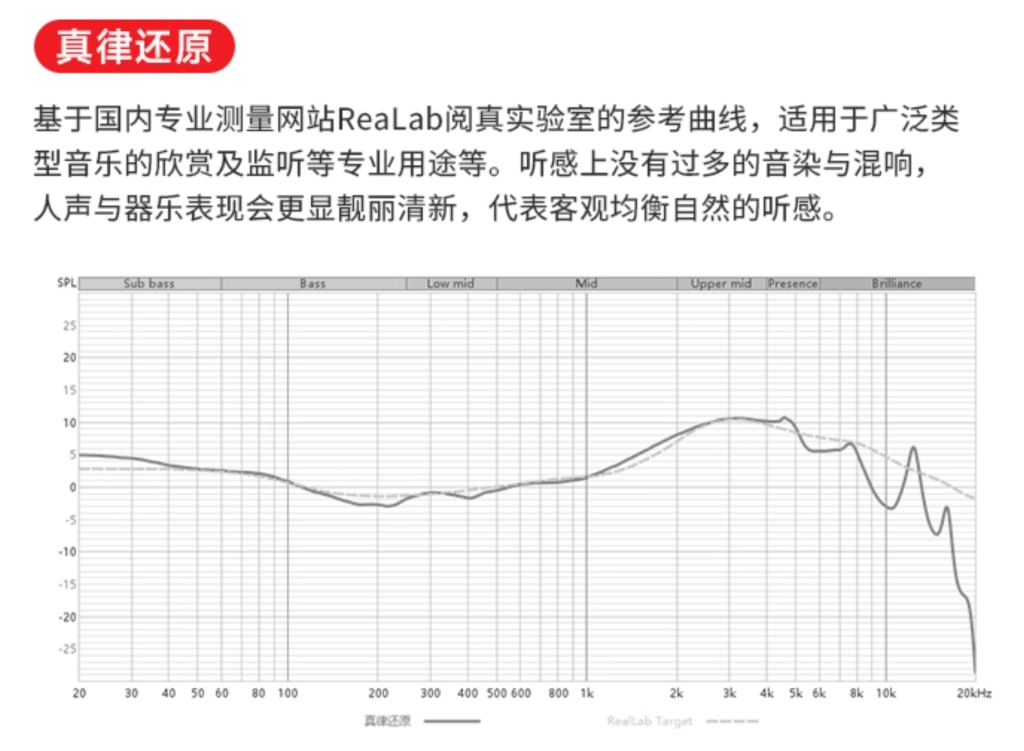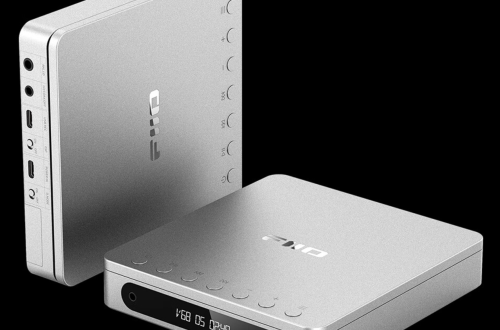HIFI Diary: NICEHCK OriG in TWS Bluetooth Earphone Review
I. Preface
Thanks to a friend for sending this for review, I managed to get my hands on the new OriG in TWS earphones from NiceHCK just before the holiday. These earphones have been incredibly popular, not only because the price of about $28 is very attractive, but also because NiceHCK has proven over the past few years that they indeed have some skills in the entry-level product series (hence they sold out rapidly before National Day). However, it must be said that the NiceHCK Rockies electrostatic hybrid flagship earphones reviewed by the BLOG owner some time ago were almost a tuning disaster, and facing the overwhelming media praise articles, NiceHCK’s marketing can sometimes be quite cringeworthy. But this TWS we’re reviewing today is indeed in NiceHCK’s sweet spot for value, so let’s wait and see.
II. Preparation for the Review
The earphones reviewed this time are the NiceHCK OriG in Origin TWS earphones, firmware version 0405. The review device used is Xiaomi 13 Ultra, connected via LHDC, with QQ Music as the playback software. OriG in does not support the currently popular LDAC protocol, and only supports AAC and LHDC protocols as seen in the APP. During the review process, noise cancellation was turned off, game mode was turned off, and low latency mode was turned off. According to the official instructions, the “True Law Restoration” preset was selected, as OriG does not support custom EQ.

Additionally, the BLOG owner encountered the first BUG here. Last month when reviewing the NiceHCK Octave dongle, the BLOG owner had already installed version 1.1 of the APP, and this time directly upgraded to version 2.2, which resulted in the Bluetooth earphones not being recognized. Only after completely uninstalling and reinstalling the APP could they be seen. Also, after switching between AAC and LHDC, there was a BUG where the earphones produced severe noise and couldn’t play music, which could only be resolved by reconnecting the earphones once. This also shows that OriG in’s stability still has some distance from mature TWS brands, but if compared to other HIFI brands, like Moondrop’s terrible APP experience, then NiceHCK wins by a landslide. Finally, introduced for this comparison review are HIFIMAN’s Svanar Wireless (commonly known as Big Goose) and Moondrop’s Dream Back 1st generation.
III. Assessment Tracks/Scoring Method
The track selection is based on the BLOG owner’s usual listening preferences, which are about 70% Japanese music + 30% large-scale orchestral music. Therefore, the selection leans heavily towards Japanese music. The scoring criteria are derived from a simplified version of Liu Hansheng’s “Twenty Essentials for Audio,” with a maximum score of 10, though generally, the highest score given is 9. A score of 8 indicates a clear advantage in the scoring category, 7 signifies excellence, 6 means it can be normally appreciated, 5 means it can be normally listened to, and scores below 5 are not commented on. For a more detailed evaluation plan, please refer to here.
IV. Testing Begins
| Item | Svanar Wireless | OriG in | Dream Back 1st Gen |
|---|---|---|---|
| Integrity | 8/10 | 7.5/10 | 7.5/10 |
| High frequency | 7.5/10 | 6.5/10 | 7/10 |
| Medium frequency | 8/10 | 6/10 | 7/10 |
| Low frequency | 8/10 | 7/10 | 7/10 |
| Analysis, separation | 7.5/10 | 6.5/10 | 7.5/10 |
| Sound field, density | 7.5/10 | 6/10 | 7/10 |
| Drive, dynamic | 8/10 | 6.5/10 | 7/10 |
| Total score | 7.8/10 | 6.6/10 | 7.1/10 |
1、Song: My Dearest (最爱是谁 My Dearest), Singer: Leslie Cheung (张国荣), Album: My Dearest (最爱是谁 My Dearest)

“My Dearest” was originally sung by George Lam (林子祥) in 1986, and later covered by Hong Kong legendary singer Leslie Cheung (fans nickname: Gor Gor) as “My Dearest.” This song was recorded in 1989, initially included in the master tape of the album “Salute,” but for various reasons, it was never officially released until recent years when it resurfaced through master tape restoration technology. It was finally rearranged and released by Universal Music in the “REMEMBRANCE Leslie” commemorative project. Its creative team can be called the golden combination of the Hong Kong music scene: lyricist by Pan Yuanliang (潘源良), composer by Lowell Lo (卢冠廷), arrangement by jazz master Ted Lo (罗尚正), and producer by Alvin Leong (梁荣骏).
Listening carefully to this song, it’s easy to find that Leslie Cheung performed this work with a lyrical foundation. Lowell Lo’s melody lines are beautiful and full of narrative, with continuously flowing piano and violin accompaniment creating a deep emotional space. Ted Lo’s rearrangement injected some modern jazz elements into the original version, such as incorporating drums, maracas, saxophone, and bass tones interspersed, creating a style that is both nostalgic and modern.
As undoubtedly the top star in the Hong Kong music scene, Leslie Cheung’s voice in this song shows strong appeal: his signature rich baritone accurately conveys the contradictory emotions of “love and questioning” in the lyrics. Pan Yuanliang’s lyrics take “who is the dearest” as the core proposition, exploring choices, regrets, and self-questioning in love. Through a series of inner monologue-style questions (such as “who is the love of my life”), the lyrics outline the protagonist’s struggle in the emotional maze. This questioning is not angry or desperate, but carries a poetic sense of ambiguity, highly consistent with Leslie Cheung’s elegant style.
As a work buried for over thirty years, the emergence of “My Dearest” is not only a surprise for fans but also has important cultural archival significance. It continues Leslie Cheung’s artistic pursuit of “paying tribute to classics” in the “Salute” album, while also showing the jazz quality rarely emphasized in his singing style. The re-release in 2023 is also a continuation of Leslie Cheung’s artistic life, allowing his voice to resonate again with contemporary listeners through modern technological means.
When OriG in presents this song, Leslie Cheung’s voice is rich and clean, and the vocal perception is not bad. The most outstanding aspect should be the texture and quantity of the bass, which are quite good. However, it cannot be denied that when compared to Dream Back 1st generation, it’s obvious that the mid-frequency details of the vocals are relatively less, and due to the poor dynamics (difference between maximum and minimum sound pressure) and micro-dynamics (details of vocals and instruments), the emotions conveyed by the song are relatively flat, not quite matching the song’s original artistic conception. Of course, if you don’t like listening to such rich baritone voices and don’t like such intense emotional experiences, then OriG in doesn’t have major problems.
2、Song: Jianghu Ruhuai (江湖入怀), Singer: Bracket Jun (括号君), Album: Fengling Yuxiu Animation Original Soundtrack (风灵玉秀 动画原声带)

“Jianghu Ruhuai” is the ending song of the domestic original animation “Fengling Yuxiu,” sung by Bracket Jun, a member of New Language Alliance. This song, with its unique Chinese style electronic fusion style and poetic lyrics, constructs a Jianghu world full of martial arts atmosphere and female perspective, becoming an important extension of the animation’s emotional tone.
The song adopts Chinese style electronic as its core style, skillfully blending traditional ethnic instruments with modern electronic elements. The intro is introduced by clear guzheng plucking, supplemented by ethereal xiao sounds to set the Jianghu atmosphere. The verse part adds pipa plucking to enhance rhythm and classical charm. The arrangement uses electronic drum kits and synthesizers as the foundation, creating a light and flowing rhythm. The song particularly emphasizes composing continuous long notes to match the animation’s distinction from traditional male-dominated martial arts works, highlighting the long-lasting affection and agility of female martial artists.
Bracket Jun’s vocal tone is cool with a slight hoarseness, using breathy voice and vocal turns during singing to reflect the free-spiritedness and tenderness of Jianghu. In production, by adding slight reverb and harmony overlay, a slight “one person, two voices” illusory feeling is formed, making the song always sound like a chorus atmosphere, also subtly matching the work’s dual female protagonist setting.
The first impression of OriG in is that the sound is comfortable, the vocals are lazy and warm. This style of sound tuning easily allows listeners to calm down. Frankly speaking, during the typing process, this only 2-minute music was looped at least 20 times by the BLOG owner, but the BLOG owner didn’t feel annoyed. Instead, I almost ignored the existence of the music and immersed myself in the joy of typing =W= It should be said that OriG in is indeed a relaxing and pleasant earphone. But the BLOG owner must seriously say that compared to more expensive TWS earphones, OriG in also has problems such as lack of detail in vocals and instruments, obvious insufficient separation between vocals and background, and muddy sound. In vocal style, it lacks some of the sweetness that young female voices should have, which is also related to OriG in’s inherent lack of micro-dynamics.
V. Summary
Overall, OriG in follows a very listenable approach. It’s not the cold, detached style of Apple AirPods, but maintains the warm, relaxed sound characteristic of NiceHCK’s 9.9 earphones. For people who just want to listen to something while working without it demanding too much attention, this is a very suitable style.
However, there are pros and cons. OriG in’s style is quite distant from HIFI standards – analysis, separation, density, and dynamics are all unremarkable. When you develop the need to catch details, hear vocal articulation, or observe soundstage distribution while listening to music, OriG in simply can’t deliver.
But as the BLOG owner mentioned earlier, not only HIFI-level earphones are worthy of appreciating music. OriG in, at only about $28, provides good APP functionality, noise cancellation, and comfortable wearing experience – all of which are significant advantages.
It must be said that in terms of music genre adaptability, OriG in’s sound completion is actually quite good. All three frequency ranges are non-irritating with smooth, fluent transitions. Except for very complex electronic music and rock, OriG in can handle almost any music genre, which is relatively rare in entry-level TWS earphones.
If your budget is about $28 and you want to buy TWS earphones for commuting, work, or study, the BLOG owner believes OriG in is one of the best choices available.




